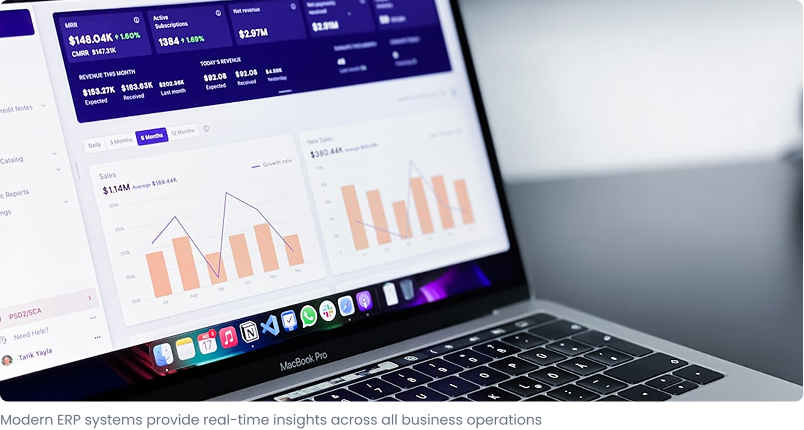Israr Ahmed
May 27, 2025 • 12 min read

Learn how the Software Development Life Cycle (SDLC) works, with clear explanations of each phase, major models like Agile & Waterfall, and best practices.
When it comes to building custom software, one of the most crucial elements to ensure the project runs smoothly and delivers results is understanding the Software Development Life Cycle. Think of SDLC as the roadmap for creating software, guiding you through each phase from start to finish.
Whether you're a startup founder, project manager, or business leader, having a clear grasp of SDLC can help you make informed decisions, avoid costly mistakes, and set your project up for success.
SDLC is a structured approach used by software development teams to plan, design, build, test, and deploy software. This methodology helps ensure that time, budget, and resources are spent wisely while delivering high-quality results.
The Software Development Life Cycle is a systematic process used by software development teams to design, develop, test, and deploy software applications. It provides a structured framework for creating high-quality software while ensuring consistency, transparency, and efficiency throughout the entire development process.
SDLC is not just a set of technical procedures — it's a guide for both development teams and business leaders to ensure that the project is completed on time, within budget, and meets the desired business requirements.
By following an organized framework, SDLC breaks the development process into clear, manageable phases. This helps ensure each stage is completed before moving forward, minimizing errors and missed deadlines.
SDLC facilitates communication between developers, project managers, and business leaders. With defined stages, each team member understands their responsibilities, timelines, and expectations.
Properly managing SDLC helps you stay within budget. By breaking projects into phases, you can track progress and identify potential cost overruns early.
With regular reviews and checkpoints at each stage, potential risks are identified and addressed early, preventing costly changes later.
SDLC includes extensive testing at various stages to ensure quality throughout development, delivering a higher-quality product that meets expectations.
| Phase | Description | Example |
|---|---|---|
| Planning | Understanding the project's scope, identifying business requirements, and laying down the groundwork for development. Key Activities: Define objectives, allocate resources, establish timeline, communicate with stakeholders | For a new e-commerce platform, planning includes deciding on core features like product catalog, payment integration, shipping options, and customer management. |
| Requirements Gathering | Collecting detailed requirements for the software, including functional and non-functional requirements. Key Activities: Document what the software should do and how it should perform | For a CRM system, gather requirements for lead tracking, client communication logs, reporting dashboards, and third-party integrations. |
| Design | Creating software architecture, user interface, and user experience designs. Key Activities: Draft detailed designs for system components, ensure alignment with business needs | For a mobile banking app, create wireframes for user interface, navigation flow, and security features. |
| Development | The actual coding phase where developers build the software based on design documents. Key Activities: Write code, build features, implement functionality | For a social media platform, build user profiles, news feeds, notifications, messaging systems, and back-end infrastructure. |
| Testing | Thorough testing including functional, performance, and security testing to identify bugs and issues. Key Activities: Test all features, identify bugs, ensure software meets requirements | For a video streaming platform, test video loading speed, account security, payment processing, and concurrent user capacity. |
| Deployment | Releasing the product to users through app stores, websites, or enterprise platforms. Key Activities: Deploy software, monitor initial performance, gather early feedback | For a SaaS product, roll out to beta users first, gather feedback, then launch fully. |
| Maintenance | Ongoing updates, bug fixes, security patches, and enhancements after deployment. Key Activities: Fix bugs, update features, ensure security, maintain compatibility | For a weather app, fix location data issues, add severe weather notifications, update for new devices. |
Traditional linear and sequential approach where each phase must be completed before the next begins.
When to Use:
Pros:
Cons:
Flexible, iterative approach with frequent reassessment and adaptation through regular sprints.
When to Use:
Pros:
Cons:
Extension of Waterfall emphasizing verification and validation at every stage.
When to Use:
Pros:
Cons:
Combines Waterfall and Agile with iterative development and structured risk management.
When to Use:
Pros:
Cons:
Develops software in smaller, repeatable cycles with continuous improvement.
When to Use:
Pros:
Cons:
Modern approach combining development and operations with focus on CI/CD.
When to Use:
Pros:
Cons:
Consider these key factors when selecting your SDLC model:
| Factor | Consideration |
|---|---|
| Project Requirements and Scope | Well-defined requirements favor Waterfall/V-Model; evolving requirements favor Agile/Iterative |
| Timeframe and Deadlines | Quick delivery needs Agile/DevOps; longer timelines can use Waterfall/V-Model |
| Team Size and Structure | Large teams suit DevOps/V-Model; smaller teams benefit from Agile/Iterative |
| Risk Management | High-risk projects need Spiral/V-Model; lower risk can use Agile/Waterfall |
| Budget and Resources | Waterfall/V-Model require larger upfront investment; Agile/DevOps have ongoing costs |
| Customer Involvement | Frequent feedback needs Agile/Iterative; hands-off customers can use Waterfall/V-Model |
| Regulatory Requirements | Strict compliance favors V-Model/Waterfall with thorough documentation |
Selecting the right SDLC model is not a decision to be taken lightly. It depends on various factors including project complexity, flexibility needed, time constraints, team structure, and risk level.
For businesses looking for adaptability and continuous feedback, Agile and Iterative models are excellent options. For those focused on stability, documentation, and rigorous testing, Waterfall and V-Model are more appropriate. If your project demands rapid development and deployment, DevOps is the way to go.
Ultimately, the best SDLC model is the one that fits your business's goals, resources, and timeline. By selecting the right approach, you can ensure the successful development, deployment, and maintenance of your software, helping your business stay competitive and meet customer expectations.
Israr Ahmed
Software Development Specialist at SA Systems
Israr specializes in software development methodologies and SDLC optimization for businesses of all sizes.
 ERP
ERPMarch 15, 2025
 ERP
ERPFebruary 28, 2025
.png) ERP
ERPJanuary 20, 2025
.png) Real Estate
Real EstateDecember 10, 2024